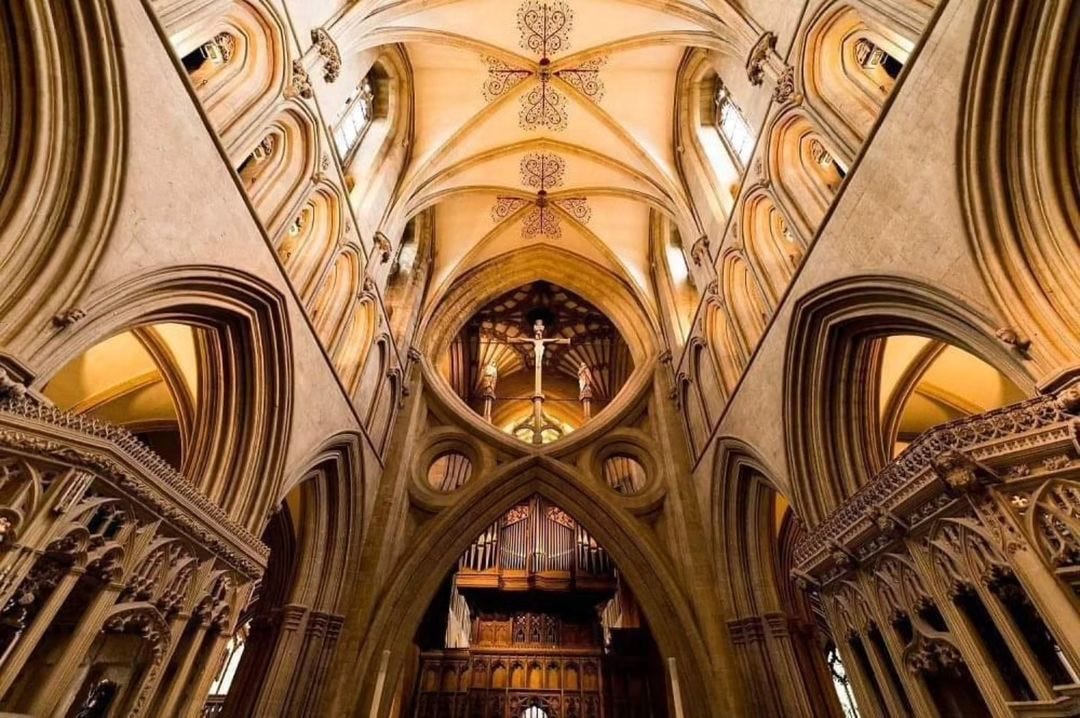“In November Torminster Cathedral commemorated its patron saint and benefactors. The Cathedral was great at festivals, each Christmas and Easter and Whitsun marching by in the procession of the days in flower-decked pomp, but in after years it seemed to Henrietta and Hugh Anthony that this particular festival surpassed all the others... it had a peaceful and rather wistful beauty that was unforgettable.”
🍂 Elizabeth Goudge, A City of Bells
Welcome to our Week 2 discussion on A City of Bells !
Today we will take a look at chapters 5-7, which take us deeper into the lives of our characters and the building at the center of this cathedral city.
Wells Cathedral boosts over 300 statues on its front face and dozens of intact tomb effigies. Stained glass, monuments and hundreds of years of building projects since its humble beginning in the eighth century:
“The earliest record of a church on the present site is a charter of 766. A bishopric was established in 909… Wells became a co-cathedral in 1218. The remains of the tenth-century cathedral lie to the south of the present building, beneath the cloister. The present cathedral has a cruciform plan with a chapter house attached to the north and a cloister to the south, and is largely the result of two building campaigns which took place between c. 1180 to c. 1260 and c. 1285 to c. 1345. The western half of the cathedral, including the nave and western transepts, belongs primarily to the first building phase and is constructed in the Early English style of Gothic architecture… it also retains much medieval stained glass… the cloisters were remodeled in the same style between 1420 and 1508. The cathedral was restored over the course of the nineteenth and early twentieth centuries.”1
Wells is a church the reminds one of all who have come before, and that each life can be threaded together into something beautiful, good, and whole.
Today we will take a look at inside the cathedral where Henrietta and Hugh Anthony decorated, here the glorious hymns of All Saints’ Day, and see where Jocelyn is on his journey…

Inside the Cathedral
Keep reading with a 7-day free trial
Subscribe to Elizabeth Goudge Bookclub’s Substack to keep reading this post and get 7 days of free access to the full post archives.





